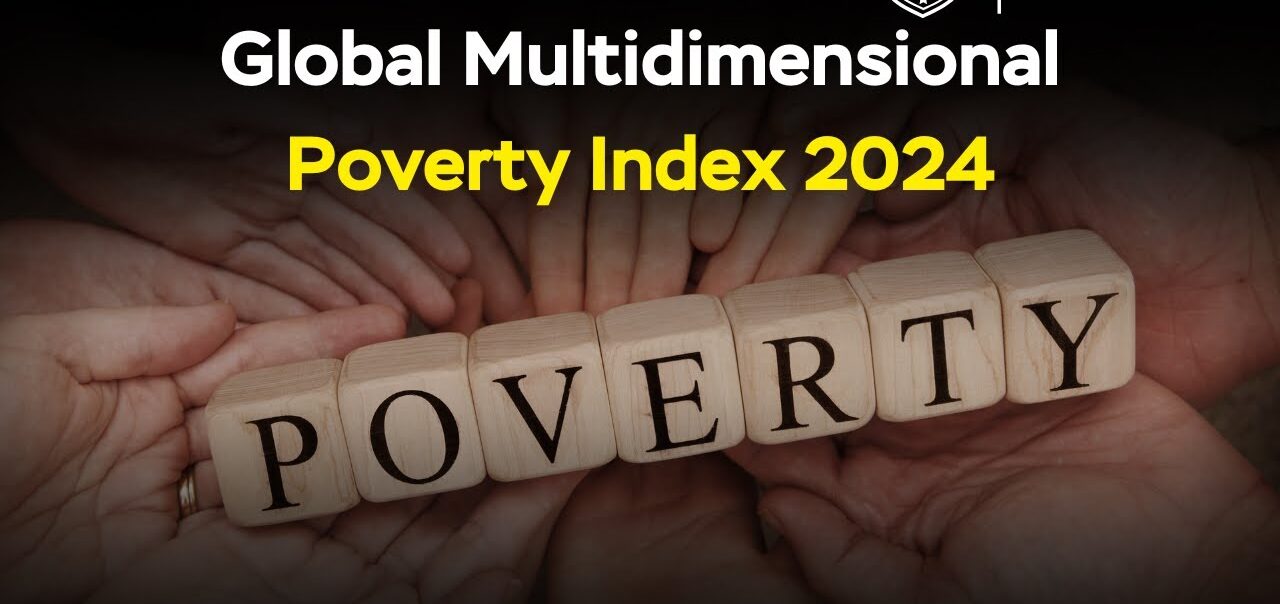Understanding the 2024 Global Multidimensional Poverty Index (MPI)
The Global Multidimensional Poverty Index (MPI) for 2024 has been released, revealing critical insights into poverty levels across various countries. The MPI offers a comprehensive analysis by assessing various deprivations that individuals face in health, education, and living standards, rather than just income. This index is pivotal as it enables governments and organizations to understand the multidimensional nature of poverty and the specific areas where intervention is required.
Key Findings of the MPI Report
According to the report, over 1.3 billion people worldwide are living in multidimensional poverty, highlighting a significant challenge for global development. The MPI framework evaluates three primary dimensions: health, education, and living standards, which are further broken down into ten indicators. This detailed approach allows for a more nuanced understanding of poverty and facilitates targeted policy-making.
For instance, countries like India and Nigeria feature prominently in the report, with significant populations experiencing multiple deprivations. India, despite its growing economy, still grapples with high levels of multidimensional poverty, especially in rural areas. Conversely, nations like Bangladesh and Ethiopia have shown remarkable progress in reducing poverty levels, thanks to targeted social programs and economic initiatives.
The Role of MPI in Policy Formulation
The MPI serves as a valuable tool for policymakers, providing them with the necessary data to formulate effective poverty alleviation strategies. By understanding the specific deprivations affecting their populations, governments can allocate resources more efficiently and create tailored programs that address the root causes of poverty. Additionally, the MPI fosters international cooperation by allowing countries to share best practices and learn from successful poverty reduction strategies implemented elsewhere.
Conclusion
In summary, the 2024 Global Multidimensional Poverty Index provides essential insights into the state of poverty worldwide. By moving beyond income-based measures, the MPI emphasizes the need for comprehensive approaches to tackle poverty effectively. Countries must leverage this data to implement strategies that not only reduce poverty levels but also enhance the overall well-being of their citizens.

Why This News is Important
Understanding Global Poverty Trends
The release of the 2024 Global Multidimensional Poverty Index (MPI) is significant as it sheds light on the current state of poverty globally. This information is crucial for governments, NGOs, and international organizations as they strive to meet the United Nations Sustainable Development Goals (SDGs), particularly Goal 1: No Poverty. Understanding the complexities of poverty allows for more effective policy-making and resource allocation.
Comprehensive Approach to Poverty Measurement
The MPI moves beyond traditional income measurements, recognizing that poverty encompasses various deprivations, including health, education, and living standards. This comprehensive approach provides a clearer picture of poverty, enabling stakeholders to address the specific needs of impoverished populations. As a result, targeted interventions can be developed to tackle the underlying issues contributing to poverty.
Informing Policy and Program Development
For students preparing for government exams, understanding the MPI is vital as it illustrates how data can inform policy decisions. This knowledge is essential for future civil servants, teachers, and professionals in various sectors. By grasping the significance of multidimensional poverty, candidates can contribute to the formulation of more effective social programs that enhance the quality of life for marginalized communities.
Promoting Global Collaboration
The MPI fosters international dialogue and collaboration, encouraging countries to share best practices in poverty reduction. This cooperation is vital in the global fight against poverty, and understanding its implications will be beneficial for students aiming for careers in international relations, social work, and development studies.
Historical Context
The concept of multidimensional poverty was first introduced by the United Nations Development Programme (UNDP) in 2010. The MPI was developed to provide a more holistic understanding of poverty than income-based measures alone. Historically, poverty measurement focused primarily on economic indicators, often overlooking crucial factors such as education and health. The MPI framework was created to address these shortcomings and has been widely adopted since its inception.
Over the years, various countries have implemented the MPI in their national poverty assessments, contributing to a more nuanced understanding of poverty dynamics. The index has been revised periodically, with the latest update in 2024 reflecting the changing global landscape and the ongoing challenges posed by socio-economic disparities.
Key Takeaways from the 2024 Global Multidimensional Poverty Index
| S.No | Key Takeaway |
|---|---|
| 1 | Over 1.3 billion people globally are living in multidimensional poverty. |
| 2 | The MPI assesses poverty through three dimensions: health, education, and living standards. |
| 3 | Countries like India and Nigeria have significant poverty levels, while Bangladesh and Ethiopia have made notable progress. |
| 4 | The MPI helps policymakers formulate targeted poverty alleviation strategies based on specific deprivations. |
| 5 | Understanding the MPI is essential for students preparing for government exams as it illustrates the complexities of poverty and informs policy decisions. |
Important FAQs for Students from this News
Q1: What is the Global Multidimensional Poverty Index (MPI)?
A: The Global Multidimensional Poverty Index (MPI) is an index that measures poverty beyond just income, evaluating various deprivations in health, education, and living standards. It provides a comprehensive understanding of poverty levels in different countries.
Q2: How many people are affected by multidimensional poverty according to the 2024 MPI?
A: According to the 2024 MPI, over 1.3 billion people globally are living in multidimensional poverty.
Q3: Which countries have shown significant progress in reducing multidimensional poverty?
A: Countries like Bangladesh and Ethiopia have shown remarkable progress in reducing multidimensional poverty through targeted social programs and economic initiatives.
Q4: Why is the MPI important for policymakers?
A: The MPI is important for policymakers as it provides detailed data on specific deprivations affecting populations, enabling them to formulate effective poverty alleviation strategies and allocate resources efficiently.
Q5: How can understanding the MPI benefit students preparing for government exams?
A: Understanding the MPI can benefit students by illustrating how data informs policy decisions and enhances their knowledge of the complexities of poverty, which is crucial for careers in public service and social work.
Some Important Current Affairs Links














